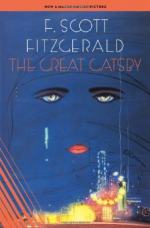|
This section contains 933 words (approx. 4 pages at 300 words per page) |

|
Symbolism in "The Great Gatsby"
Summary: The powerful symbolism in "The Great Gatsby" by F. Scott Fitzgerald adds power and depth to the narrative. Key symbolic meanings lie in the differences between West Egg and East Egg, the Valley of Ashes, the dock's green light, and Doctor Eckleburg's huge blue eyes.
Symbolism is used in literature to convey a hidden and often more complex, significant meaning behind objects, characters, and places. For instance, A dove symbolizes peace, just as roses are similarly representative of love. Throughout F. Scott Fitzgerald's The Great Gatsby, an unfortunate story of hope, materialism, and the decay of the American dream, Fitzgerald very cleverly weaves symbolic meaning into often otherwise overlooked and meaningless items in order to convey his own beliefs; and as a result heightens the power of the novel.
The first notable symbol found in The Great Gatsby is the division between East and West Egg. A common theme throughout the novel is the separation of social standings. Separated by water, it is a symbolic barrier keeping those apart from much of what they want. The contrast of East and West Egg act as a physical symbol to only further fuel the division...
|
This section contains 933 words (approx. 4 pages at 300 words per page) |

|


